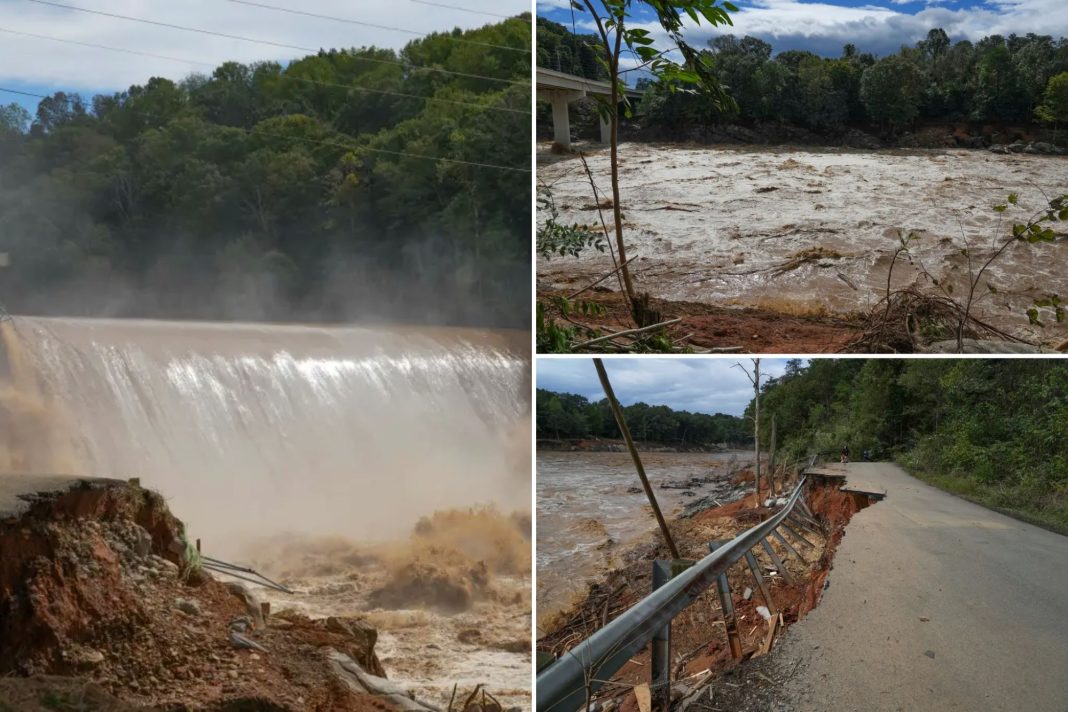In late September 2024, East Tennessee found itself in the eye of a storm—quite literally—as the remnants of Hurricane Helene unleashed a deluge of rain across the region. The Nolichucky River, normally a gentle flow, transformed into a raging torrent, swelling several feet above record flood stages and threatening the integrity of the Nolichucky Dam in Greeneville. The scene was nothing short of apocalyptic, with waves crashing over the dam’s structure, prompting urgent fears of an imminent breach.
As the National Weather Service (NWS) issued an alarming Flash Flood Emergency warning, the stakes couldn’t have been higher. A failure of the dam could have catastrophic consequences, unleashing a wall of water that would reach West Allens Bridge Road within a mere 20 minutes. This critical time frame added an air of urgency to the already dire situation, as residents braced for the worst while emergency services mobilized to safeguard lives and property.
The Tennessee Valley Authority (TVA) acted swiftly, activating a Condition Red Warning, underscoring the severity of the situation. Reports indicated that rainfall totals in the nearby Appalachian Mountains soared between 15 to 25 inches, a staggering amount that overwhelmed the region’s infrastructure and waterways. The TVA estimated that water levels had reached an astonishing 8 feet over the record elevation, leading to extensive flooding along the river.
Yet, as the weekend progressed, a glimmer of hope emerged. By late Saturday morning, the Nolichucky River began to crest, and miraculously, the dam remained intact. The TVA reported that water levels were receding at a rate of approximately one foot per hour. Their Dam Safety teams promptly initiated assessments to determine the dam’s condition and outline next steps. The sense of relief was palpable, but the threat was far from over, as the surrounding areas were still grappling with the repercussions of the heavy rainfall.
Among the towns most affected was Erwin, which found itself in the direct path of the rising waters. Here, the flooding was so severe that it necessitated a heroic rescue operation involving dozens of hospital staff and patients stranded on the roof of the Unicoi County Hospital. This dramatic situation highlighted not only the immediate dangers posed by the flooding but also the resilience and bravery of those who rushed to assist others in their time of need.
In analyzing the unfolding events, experts emphasize the importance of preparedness in the face of natural disasters. Research shows that communities that invest in infrastructure resilience and emergency response planning are better equipped to handle catastrophic events. In this case, the swift action taken by the TVA and local authorities likely mitigated what could have been a far more disastrous outcome.
As the waters recede and recovery efforts begin, East Tennessee must grapple with the broader implications of climate change and the increasing frequency of extreme weather events. The torrential rains from Hurricane Helene serve as a stark reminder of the vulnerabilities many communities face, urging a call to action for enhanced disaster preparedness and climate resilience strategies.
In the wake of this near catastrophe, the stories of survival and community support shine through the darkness. While the Nolichucky River’s waters may have surged, the spirit of resilience remains unwavering, reminding us all of the strength that emerges in the face of adversity. As the region rebuilds, it will undoubtedly carry with it the lessons learned from this harrowing experience, fostering a future better prepared for whatever challenges lie ahead.
